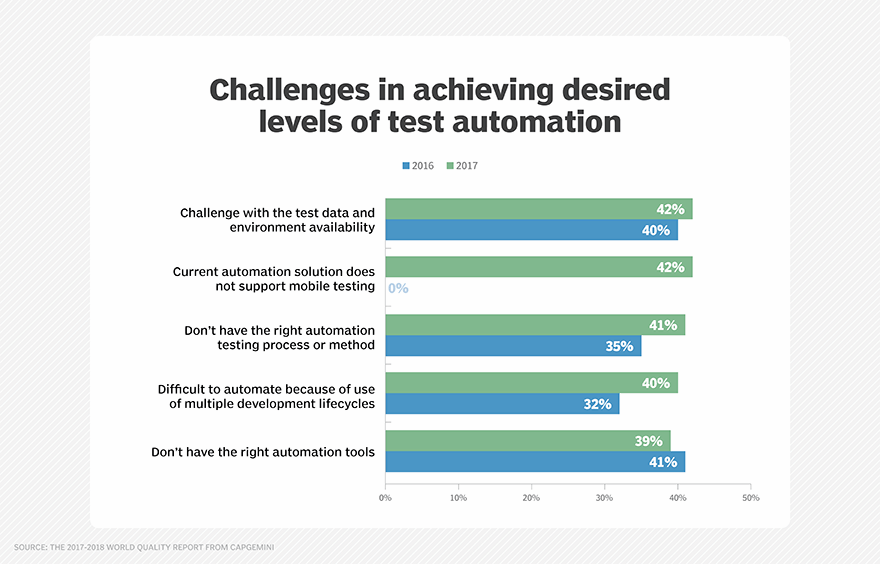What are the emerging trends in software development?
If there is one thing guaranteed to make a seasoned dev team leader weep, it's the test automation process.
Software developers would love to rename test automation to the bottleneck and send this trend to stand in the corner indefinitely. The ongoing problems with the test automation process are almost too many to list, but here's a start:
- lots of general test automation tools for a task that's highly specific;
- insufficient test scripting prowess;
- lack of ownership; and
- unrealistic management expectations.
Throw in challenges with integration among tools and the need for speed in Agile/DevOps shops, and it's hardly surprising that a 2017 report from Capgemini and Sogeti, in conjunction with Micro Focus, shows the barriers to test automation actually grew worse than in 2016. And it doesn't look like things will change much in 2018.
A handful of promising developments in the test automation process include a new crop of scriptless testing tools and increasingly widespread use of low-code development platforms, which can provide a version of automated testing. There's no question that, despite the challenges of the test automation process, companies continue to make it work.
Consider dampening the hype around this trend in software development for better luck in 2018, said Seretta Gamba, test manager at Steria Mummert ISS GmbH. "The main problem is that people still start test automation with the wrong expectations, especially that anyone can do it and all you need is a tool," she said. That attitude leaves those in charge of test automation relatively isolated and without resources. This year, Gamba is hopeful that, as testers choose to use APIs more often and to focus on both unit tests and system test automation, things will get a bit easier, and communication about the process will improve.
